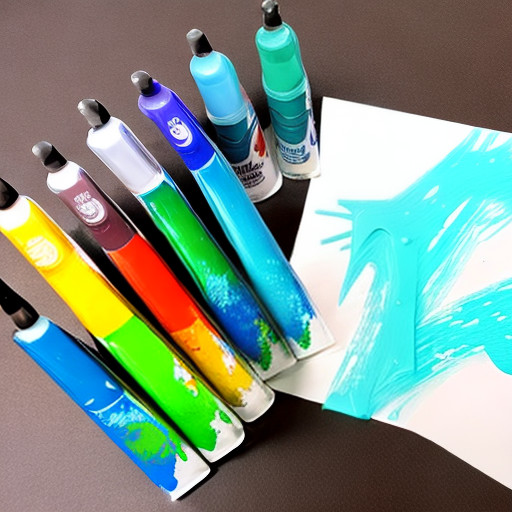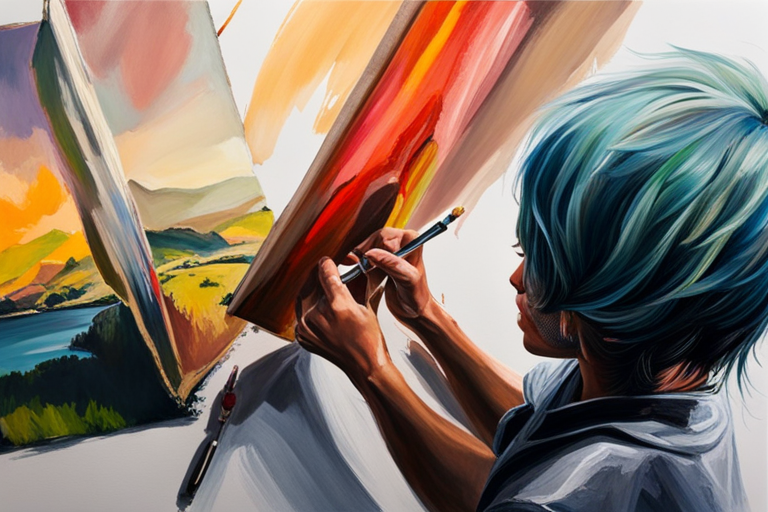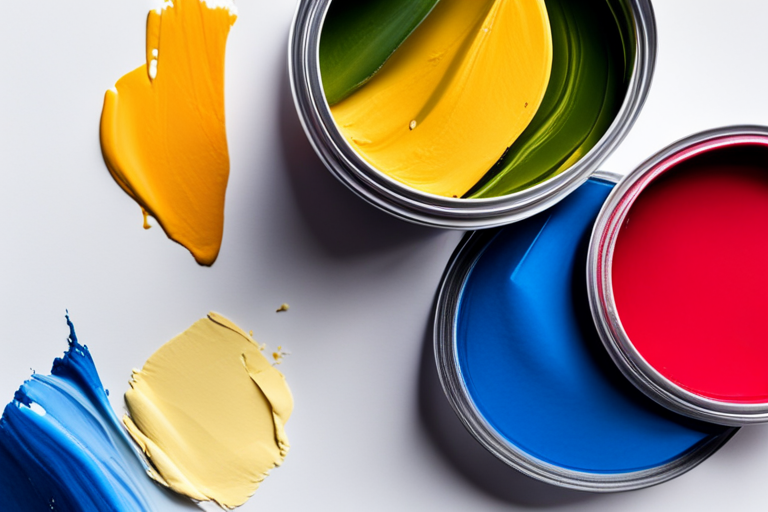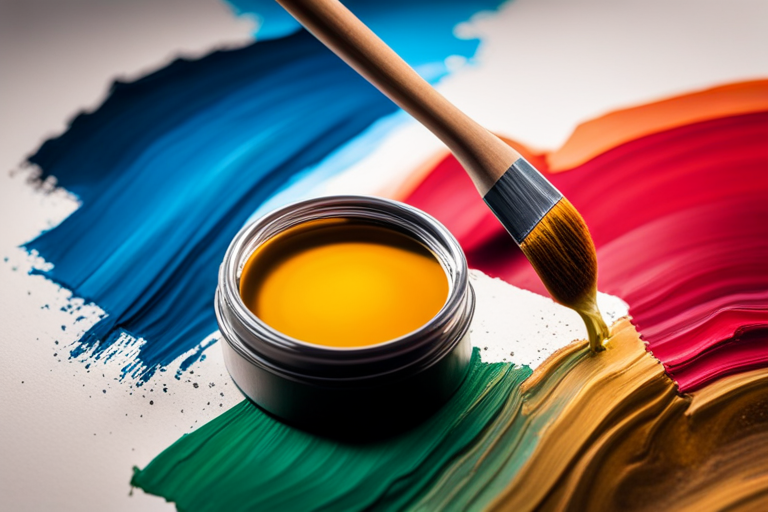Acrylic paint has become one of the most popular mediums for artists of all levels, and for good reason. This versatile paint dries quickly, comes in an array of vibrant colors, and can be used on a variety of surfaces.
However, one of the biggest concerns that artists have is how to waterproof their acrylic paintings. There’s nothing worse than spending hours on an artwork only to have it ruined by moisture or water damage.
When buying acrylic paint, it is important to read the label before purchasing. Checking the label will tell you if the paint is waterproof or not. This is important because you want your artwork to last. Acrylic paint is a great choice for many projects and can produce stunning results. However, if the paint is not waterproof, it will not last long.
Waterproof paint is the best option if you plan to use your artwork outdoors or if you want the paint to last for many years. Non-waterproof paint will fade or run if it gets wet or exposed to the elements. This can ruin your artwork and make it look dull and faded.
When looking for waterproof paint, look for the words “waterproof”, “weatherproof”, or “fade resistant” on the label. This will tell you that the paint is suitable for outdoor use and will last for many years.
Also, check the ingredients list on the label for any chemicals or additives. Some paints contain additives that can be harmful to your health, so be sure to check the label carefully.
Overall, it is important to read the label of the acrylic paint you are buying to make sure it is waterproof. This will ensure that your artwork looks vibrant and lasts for many years. Take the time to do your research and choose the best paint for your project.
Use a sealant to help make the paint waterproof after the paint has dried.
I’ve learned a lot about painting over the years, and one tip that has stood out to me is the importance of using a sealant to make the paint waterproof. It may seem like an unnecessary extra step, but trust me, it will save you a lot of headaches in the long run.
Once the paint has dried, it may look perfect, but it’s actually still quite vulnerable to damage from moisture, water, and other elements. This is especially true if you’re painting something that will be exposed to the elements outside, like a fence or a deck.
That’s where a sealant comes in. It creates a barrier between the paint and the outside world, protecting it from damage, fading, and wear and tear. There are many different types of sealants available, so be sure to choose one that works well with the type of paint you used.
Of course, it’s important to apply the sealant correctly for it to be effective. Make sure the surface is clean and dry before you start, and follow the instructions on the sealant carefully. In general, you’ll want to apply a thin layer of sealant using a brush, roller, or spray gun, being careful not to leave any bubbles or streaks.
Trust me, taking the time to apply a sealant over your paint will be well worth it in the end. You’ll be able to enjoy your beautiful painted surface for much longer and with much less maintenance to do.
Make sure to use multiple layers of paint when creating an acrylic painting.
When I first started painting with acrylics, I made the mistake of using only one layer of paint on my canvas. It wasn’t until I took a class and learned about the importance of layering that I realized how much depth and dimension can be added to a painting with multiple layers.
Using multiple layers of paint allows you to build up texture and add depth to your artwork. It’s important to start with a base layer and build up from there. This layer should be a solid color that covers the entire canvas. From there, you can add more layers and work on blending colors to create a realistic look.
Another benefit of using multiple layers is that you can correct mistakes or make changes without starting over completely. If you make a mistake on one layer, you can simply paint over it with a new layer and continue.
One important thing to keep in mind when layering paint is to make sure each layer is completely dry before adding the next. This will prevent the colors from blending together and creating a muddy appearance.
Overall, using multiple layers of paint is a great way to add depth and texture to your acrylic paintings. It may take a bit more time and patience, but the end result is worth it. So, don’t be afraid to experiment and layer up!
Take your time when applying the acrylic paint to ensure a smooth and even finish.

When it comes to painting, there is always one crucial thing to keep in mind: patience is key. And this is especially true when it comes to applying acrylic paint. Acrylic paints dry quickly, which can be a good thing if you know how to work with them. If you rush the process, however, you risk leaving visible brush strokes, globs of paint, and unwanted lumps and bumps on the surface of your painting.
The best advice I can give you is to take your time when applying acrylic paint – it’s critical for achieving a smooth and even finish. This means that you should coat your painting surface in even layers and not be afraid to go back and touch up any areas that need a little extra attention.
When I’m painting, I like to start by laying down a thin layer of paint first. This helps me build up my layers gradually and avoid clumping. Using a quality brush is crucial too; a brush with good bristles will help you spread the paint easily and achieve a more polished look. You may need to experiment with your brush strokes- some artists use a light touch, while others use more sweeping motions to achieve the desired effect.
Remember, the more time and effort you spend in the beginning to apply the paint, the less work you’ll need to do later to correct any mistakes. So, take a deep breath, take your time, and let the acrylic paint dry before moving on to the next layer. With enough patience and practice, you’ll be amazed at the beautiful results you can achieve!
Use a primer before painting with acrylic paint to help the paint adhere better.
As a beginner in painting, I found out the hard way that acrylic paint can sometimes be difficult to work with. I was always frustrated when my paint wouldn’t stick or when the color would come out streaky. That was until my friend gave me the buying guide tip that changed everything: Use a primer before painting with acrylic paint to help the paint adhere better.
A primer is a thin layer usually applied to a surface before painting. Its role is to create an even base and help the paint adhere better. Using a primer is particularly important when it comes to painting with acrylics, especially on porous surfaces like wood or concrete. Priming not only helps to keep the paint consistent, but it also increases the longevity of the paint and the surface it is applied to.
When selecting a primer to use with acrylics, there are a few factors that one should consider. For example, the primer should be compatible with acrylic paint. It should also be designed for the specific surface it is being applied to. Furthermore, it should be easy to work with and provide a smooth finish that doesn’t affect the final color of the paint.
I cannot stress enough the importance of using a primer before painting with acrylics. It makes a world of difference in the final product and saves time and headaches in the long run. I’d highly recommend this buying guide tip to anyone who’s struggling with acrylic paint.
Conclusion
Waterproofing acrylic paint is extremely important if you want your masterpiece to last for years to come. By reading the label of the acrylic paint you are buying and using a sealant after the paint has dried, you can ensure that the paint is fully waterproof.
Additionally, using multiple layers of paint and taking your time during application will help create an even and smooth finish. These tips are relevant and significant to any artist looking to improve their work and avoid any potential damage to their painting due to water exposure. With these simple steps, anyone can make their acrylic painting waterproof and long-lasting!




Leave a Reply